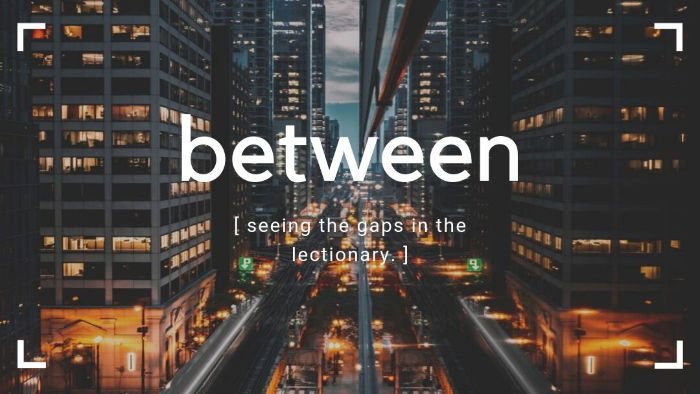
A look at the gaps in the lectionary.
This week: the gap between Epiphany 2B and 3B
The text: Mark 1:12-13
The narrative arc the Revised Common Lectionary paints for the begging is wild and out of sequence.
It combines the bouncing back and forth between the gospels of Mark and John with a reordering of call stories. Last week, we had Philip and Nathaneal first. Now we get Simon Peter, James, and John.
I am regularly frustrated by the lack of context in much of our lectionary progression, but this seems strangely designed to send the wrong message. Or, more precisely, the message out of order.
This is compounded by the problem we run into every year. We have the baptism and then skip over the Temptation in the Wilderness because we’ll get to that in Lent.
I certainly get why we do this. But it no less distorts our perception of the story itself.
The Arc
In the Synoptic Gospels (Matthew, Mark, and Luke), the story has the same arc:
- The Baptism by John
- Jesus spends 40 days in the wilderness
- Jesus calls his disciples
And this order establishes an important counter to the idea that Jesus is called into power. That God has powerful plans for him, sets him on that course, and then he goes about bringing people along for it.
Jesus goes into the wilderness to confront that very power.
Our telling the story this way, without the time in the wilderness, misses the very heart of Jesus’s mission: that being anyone’s savior is not the pursuit—saving is.
Mark’s curious temptation
This consistency among the Synoptics is stretched a bit in Mark’s gospel, however. Mark’s temptation is not so clearly focused on power as the others.
It is also as delightfully vivid as it is short.
He was in the wilderness for forty days, tempted by Satan; and he was with the wild beasts; and the angels waited on him.
Unlike Luke and Matthew’s clear concern for showing Jesus rejecting power, Mark offers a picture that demonstrates resiliency. But he does so leaving us wanting to know.
Mark is famously the urgent and direct evangelist. But he would never shy away from being clear—unless that clarity would distract us from the bigger point.
Mark offers us much to dwell on, but I suspect he doesn’t want us sticking around here when there is so much more to do.
And in much the same way, the temptation is itself one of three notable parts of his time in the wilderness. As the minimalist evangelist, Mark doesn’t waste words or offer filler. Every part matters.
So in describing the three aspects of the temptation, Mark is sharing the important character pieces of Jesus. That he was tempted, that he dwelt among the wild beasts, and that angels waited on him.
A preview of what is to come
One of the most significant aspects of Jesus’s ministry in Mark is how much his power scares his followers. A recurring theme throughout the gospel is Jesus doing something none of them knew he could do which expands their vision of what’s possible.
I think dwelling among the wild beasts hints at that.
That he can survive what would kill most of us—potentially living among them like one of them. This person who will heal the sick, exorcize demons, still storms, feed thousands, and even send a thousand demons into a herd of pigs.
Each of these things freaks people out. Because they are supposed to. We’re not supposed to want superheroes to fix things for us. That’s too much power in one person and too little power exercised by the people.
Jesus takes over
As Jesus leaves the wilderness, John the Baptizer is arrested. And Jesus takes over the work. He preaches the same stuff about repentance and the Kin-dom.
This is what leads him to the calling of disciples.
It is also valuable to recognize the need for Jesus to replace John and that their messages match. Not just for the case of synergy, but for valuing the message they share in common. A message that drew thousands from the cities into the wilderness to be baptized.
Notice that wildness.
And what they are leaving: tameness.
For a message of restoration, wholeness, and communion with God. For them and and everyone.
